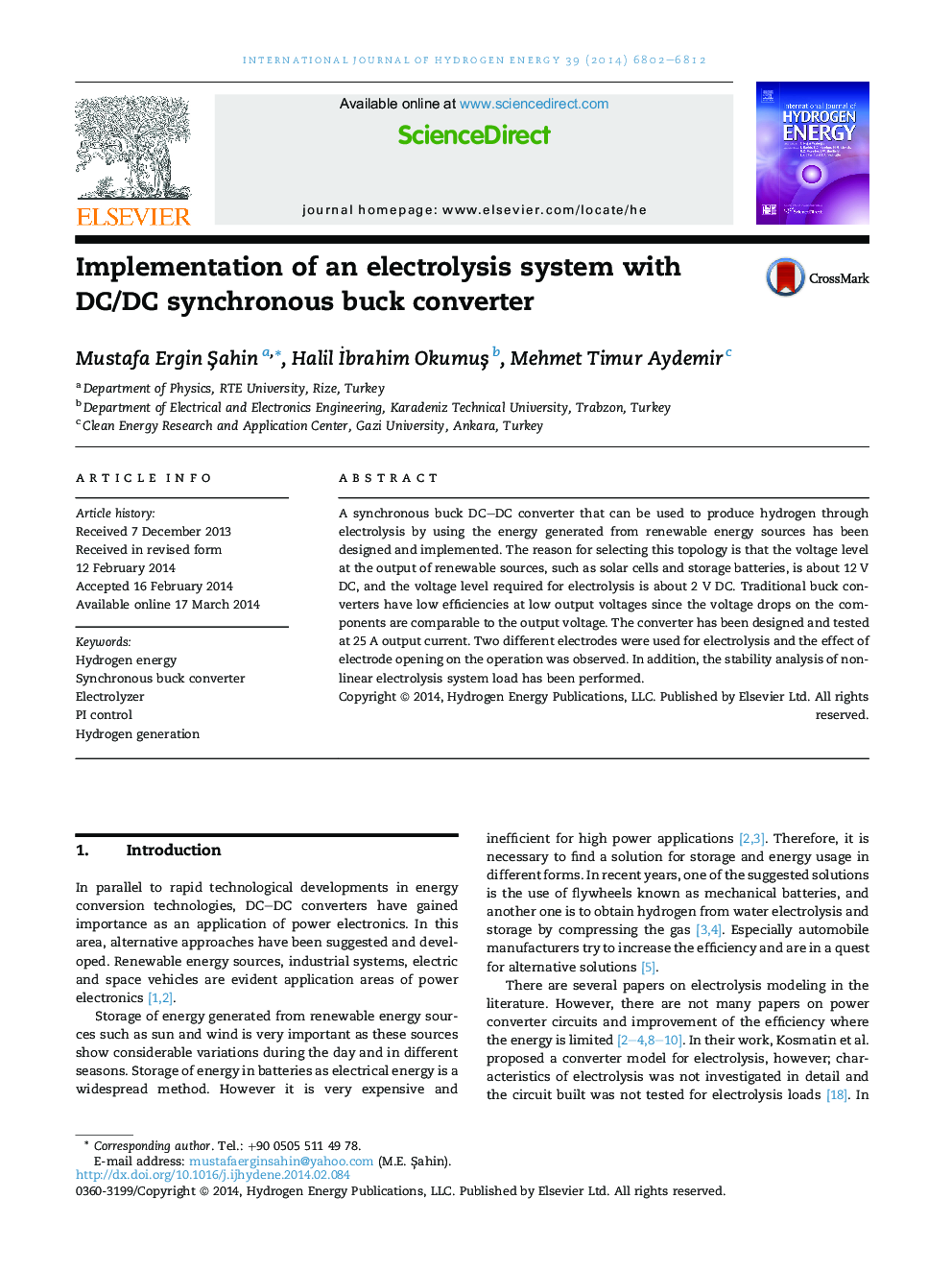| Article ID | Journal | Published Year | Pages | File Type |
|---|---|---|---|---|
| 1273435 | International Journal of Hydrogen Energy | 2014 | 11 Pages |
•An electrolysis system was designed and built to produce hydrogen.•The system is devised to use renewable energy sources as input power.•A synchronous buck DC/DC converter was designed and tested at 25 A output current.•Test results are simulated for nonlinear electrolysis loads for system stability.•Experimental results are tried for different electrolyzes plates.
A synchronous buck DC–DC converter that can be used to produce hydrogen through electrolysis by using the energy generated from renewable energy sources has been designed and implemented. The reason for selecting this topology is that the voltage level at the output of renewable sources, such as solar cells and storage batteries, is about 12 V DC, and the voltage level required for electrolysis is about 2 V DC. Traditional buck converters have low efficiencies at low output voltages since the voltage drops on the components are comparable to the output voltage. The converter has been designed and tested at 25 A output current. Two different electrodes were used for electrolysis and the effect of electrode opening on the operation was observed. In addition, the stability analysis of non-linear electrolysis system load has been performed.
